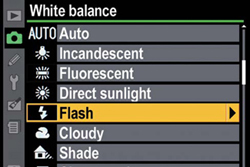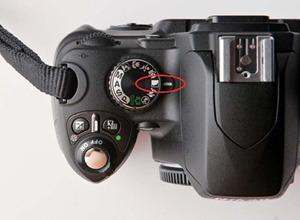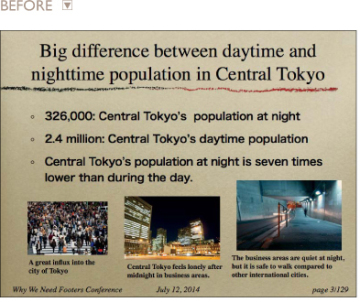Scott Kelby
Photographer and editor-in-chief of both Photoshop User and Layers magazines, and president of the National Association of Photoshop Professionals (NAPP)
Scott Kelby is the world’s No. 1 best-selling author of computer and technology books, and is the author of the all-time best-selling book on digital photography: The Digital Photography Book, Volume 1 (Peachpit Press, 2006). Here Scott gives simple tips for taking better photos.
10 tricks for getting better-looking photos
A lot of people have been going through a very frustrating experience with their digital cameras. They started with a small 3 or 4 megapixel point-and-shoot compact camera, and they were disappointed with the images they were getting. So they went out and bought a newer point-and-shoot, or a more expensive Digital SLR camera (with interchangeable lenses) that’s 10 or 12 megapixels and now they’re disappointed with their larger-size images. The problem is, it’s not about the camera. They both take pictures of whatever you aim them at.
However, the fact that it’s “not about the camera” is good news for all of us, because that means that no matter which camera you own, you can learn to take better-looking photos now, today—and here. I’ve included some of my favorite tips for doing just that.
1. Getting better portraits outside
Direct sunlight creates really harsh shadows—it’s about the most unflattering light you can shoot someone in (only photograph people you don’t like in direct sunlight). So, how do you get around this? Have your subject step into the shade. Under a tree, under an overhang, or any place where they’re in complete shade (with no dapples of light coming through the branches of the tree). The difference is pretty staggering. In the example you see below, on the left our subject is standing in direct sunlight. On the right, I had her move under a tree about 30 feet away. That’s the only thing that I did differently, and look at the results.
2. Where to put your subject in the photo
When we first started taking photos of people, at some point somebody told us to make sure that our subject is in the center of the photo. That’s how your average person takes a “people photo,” which is one reason why these photos look so average. If you look at photos taken by professional photographers, you’ll notice they usually place the person on the left or right side of the photo, rather than in the center. This adds interest and energy to the photo, and focuses your attention right on the subject (try this next time you’re shooting a portrait—you’ll be amazed at what a difference this one little thing makes).
3. The secret to shooting in low light
If you’re shooting in a church, or at night, or even at dawn or dusk, you’re going to get blurry photos. That’s because the shutter needs to stay open longer to let more light in, and even the tiniest little movement on your part guarantees a blurry photo. The way around this is to put your camera on a tripod, which simply holds your camera steady. You don’t have to buy an expensive one; my most famous photo was taken with a $14 tripod I bought at Walmart when I forget my regular tripod while on vacation.
4. The trick to getting great color
If you look at your photos, and they all look too blue, or too green, or too yellow, you’re not alone. It’s a common problem with digital cameras, but it’s so easy to fix. All you have to do is change your camera’s White Balance setting for the light you’re shooting in. For example, if you’re shooting in the shade, everything’s going to have a blue tint to it. But if you change the White Balance setting to Shade it changes the color so it looks great. If you’re shooting indoors, change it to the Indoor setting (usually an icon of a light bulb). Shooting in an office? To keep everybody from looking green, change the White Balance to Fluorescent. If you’re outside, you can just leave it set to Auto. Make setting the White Balance a part of your shooting routine, and your color will finally look great, no matter where you’re shooting.

5. Better shots with your pop-up flash
That flash on top of your camera is really harsh. In fact, it may be the only light more harsh than direct sunlight, but there is something you can do to make it much more flattering. A company called LumiQuest (www.lumiquest.com) makes a small diffuser called a Soft Screen that fits over your camera’s pop-up flash to soften and diffuse the light. The results you get are dramatically better—and your pictures are much more flattering to the subjects.
6. Don’t make this mistake when shooting portraits
One of the biggest mistakes people make when taking portraits is that they leave too much room above the subject’s head. Ideally, your subject’s eyes would be in the top third of the photo, and your subject would pretty much fill the frame. Also, it’s OK to crop off the top of your subject’s head a bit (just look at the ads in any magazine), but never chop off his or her chin. Also, the most important thing to have in focus is your subject’s eyes, so make sure your focus point is on the eyes (this goes for shooting wildlife, too).

7. Golden rule of landscape photography
If you want much better landscape photos, the trick is to shoot your landscape in beautiful light, and that light happens twice a day: around sunrise and sunset. These are the only two times professional landscape photographers will even take landscape photos—that’s how big a difference it makes (and that’s why the pros call these two times of day “The Golden Hours”). Also, these are two times of day when the light will be lower, so you’ll also need to shoot these shots on a tripod to keep from having blurry photos. Do these two things, and you’ll be amazed at the difference in your photos (and so will your friends).
8. Use your camera’s presets
If you want average-looking photos, leave your camera set to what your average camera owner does: Auto mode. But, if you want to take the quality of your images up a big notch, just turn the dial on the top of your camera to match what you’re shooting. When you do this, it changes your camera to the optimum settings for what you’re shooting. If you’re shooting people, switch that dial on top to the little icon of a person. Simple. If you’re shooting a landscape, switch it to landscape (the icon usually looks like mountains). For shooting something really close up (like a flower), switch it to the flower icon. You’ll be surprised at what a difference this makes, yet most people never spend the two seconds it takes to make this simple change.

9. Where to put the horizon line
When shooting a landscape, your average person puts the horizon line right in the center of the photo, right? Right. But if you don’t want an average-looking photo, put your horizon line either at the top third of your photo or the bottom third. How do you know which one to use? If the sky is interesting with lots of clouds, put the horizon line at the bottom, so you see more sky. If you’ve got a boring, cloudless sky, put the horizon line at the top third, so you see more foreground instead. It’s as simple as that. Just remember; there’s a reason they call it “dead” center.
10. Change your vantage point
One thing that makes photos look average is that we all pretty much take our photos from the same view—standing. If we walk up on a flower, we shoot down at it from a standing position. If we’re shooting a photo of our children, we stand there and shoot down on them. That’s how we regularly see them, so the photos look regular. A great trick to make your photos more interesting is to simply change your angle to one that isn’t so average. Get down on one knee to shoot your children at their eye view. Shoot flowers down low—at their level, so you show a view most folks don’t see. Shoot down from a stairway on a street scene. This simple change of perspective gives a fresh, more professional look to your images.


To create a more interesting composition, put your horizon line either at the top third of your photo or the bottom third.

Here is another example of taking one busy slide with small, hard-to-see images and breaking it up into several slides. The examples below serve as a dynamic backdrop for the presenter as he discusses the great shift of people in and out of Tokyo. In this case, the presenter uses four slides, which he advances smoothly with his narrative, to create a more dynamic and even cinematic effect.

